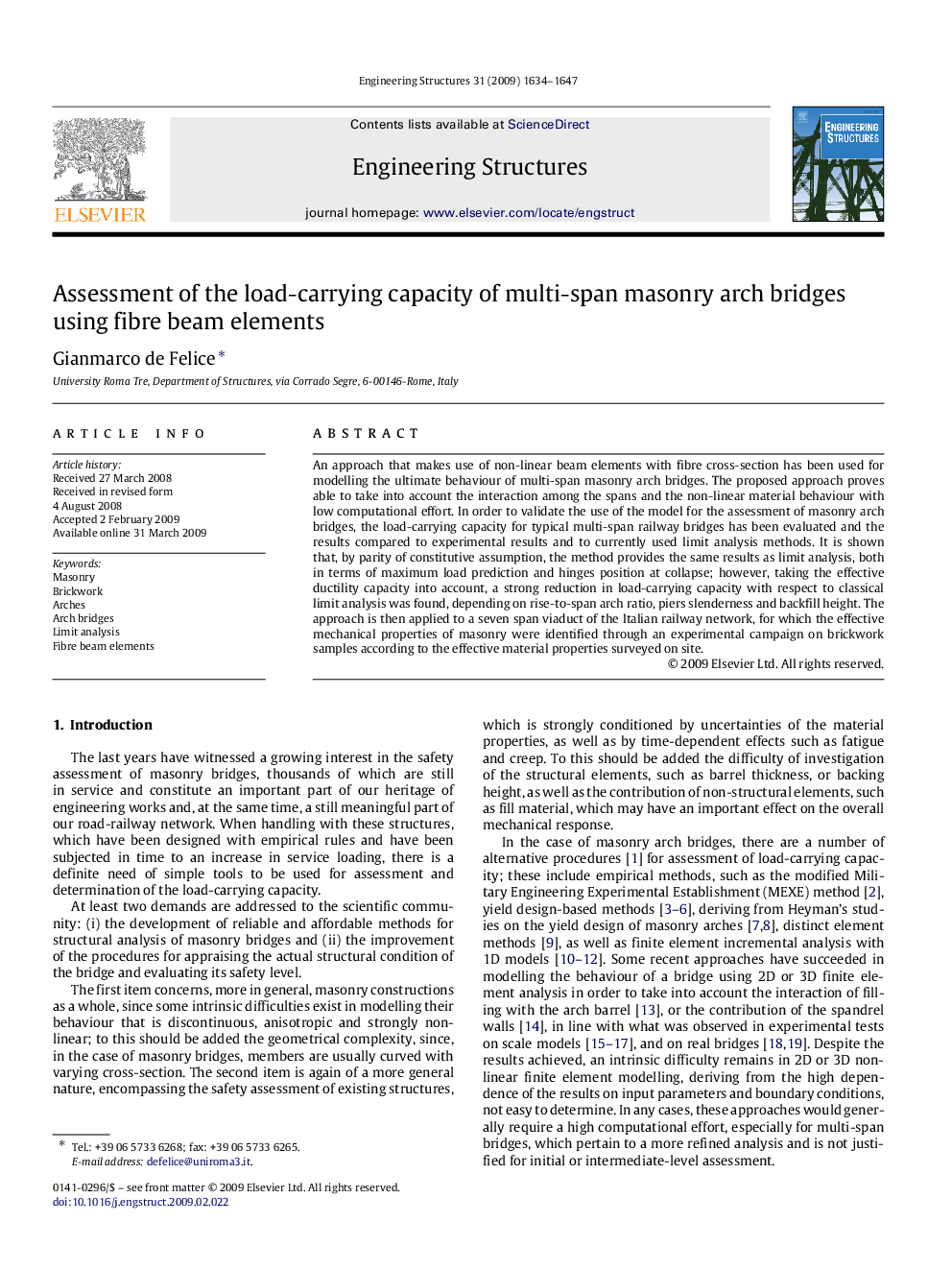| Article ID | Journal | Published Year | Pages | File Type |
|---|---|---|---|---|
| 268397 | Engineering Structures | 2009 | 14 Pages |
An approach that makes use of non-linear beam elements with fibre cross-section has been used for modelling the ultimate behaviour of multi-span masonry arch bridges. The proposed approach proves able to take into account the interaction among the spans and the non-linear material behaviour with low computational effort. In order to validate the use of the model for the assessment of masonry arch bridges, the load-carrying capacity for typical multi-span railway bridges has been evaluated and the results compared to experimental results and to currently used limit analysis methods. It is shown that, by parity of constitutive assumption, the method provides the same results as limit analysis, both in terms of maximum load prediction and hinges position at collapse; however, taking the effective ductility capacity into account, a strong reduction in load-carrying capacity with respect to classical limit analysis was found, depending on rise-to-span arch ratio, piers slenderness and backfill height. The approach is then applied to a seven span viaduct of the Italian railway network, for which the effective mechanical properties of masonry were identified through an experimental campaign on brickwork samples according to the effective material properties surveyed on site.
